Musée d’Orsay Work – From the most famous to the most unusual
- November 02, 2020
- culture, news, team building, tourism
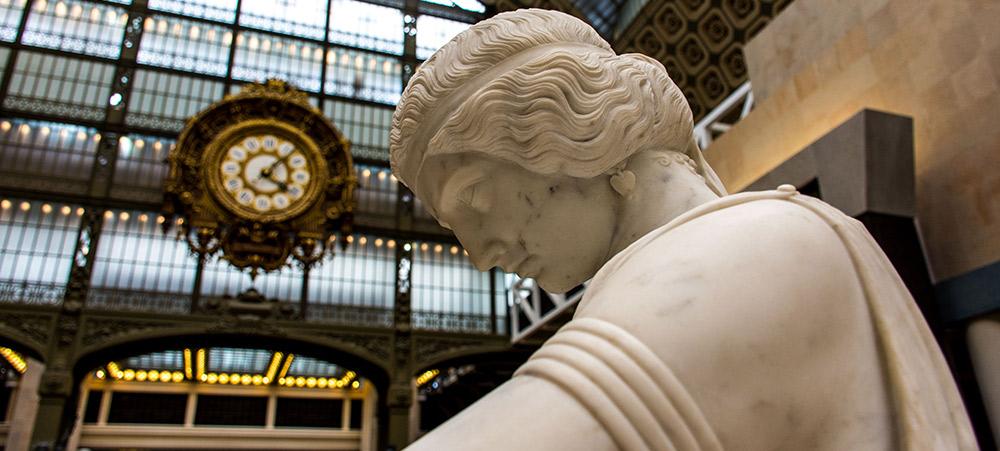
Let’s visit an old Parisian train station, the Orsay station, to discover a museum out of the ordinary. Paradise of the impressionists and more generally of the period between 1848 and 1914, let’s discover the place and the artistic productions exhibited.
Perhaps you will find your favorite Musée d’Orsay Work in this article!
Van Gogh – “The Starry Night”: among the principal works of the Musée d’Orsay
To begin our selection of our favorite works in this museum, let’s take a look at The Starry Night by the famous Vincent Van Gogh. Painted in 1888 in Arles during the artist’s stay, the painting represents a nocturnal view of the city on the banks of the Rhone River. The location chosen by the painter is near the Yellow House, at 2 place Lamartine in Arles, France, where Van Gogh had rented an apartment. This location allowed the artist to capture the reflections of the gas lighting on the river water, contrasting with the sky strewn with stars including the constellation of the Big Dipper.
Also of note, there is another master painting by Van Gogh entitled The Starry Night, painted the following year but this time in Saint-Rémy-de-Provence and which can be admired at the Museum of Modern Art in New York.
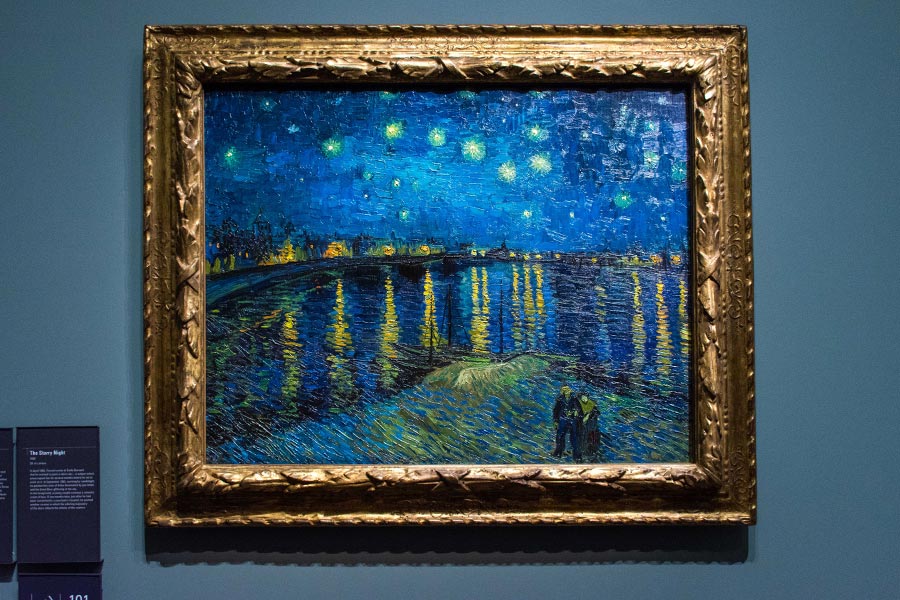
A Scandalous Picnic: The Luncheon on the Grass by Edouard Manet
Some of you might have liked to see the wonderful Edouard Manet’s Olympia, visible on the first floor of the museum, but our choice fell on another major work of painting: The Luncheon on the Grass. This painting painted in 1863, first entitled The Bath, caused a scandal in its time. Indeed, the scene depicts a naked woman, looking at the spectator, sitting in the company of two dressed men, during a country lunch. Even if Émile Zola qualifies the work as “Édouard Manet’s greatest painting”, the painting is not to the taste of his critics. Manet disturbs the habits of the bourgeoisie of the time, which was more accustomed to mythological painting.
As such, this painting by Manet can be considered as a precursor of modern painting.
» READ ABOUT – Treasure hunt at the Musée d’Orsay : artistic and playful stroll
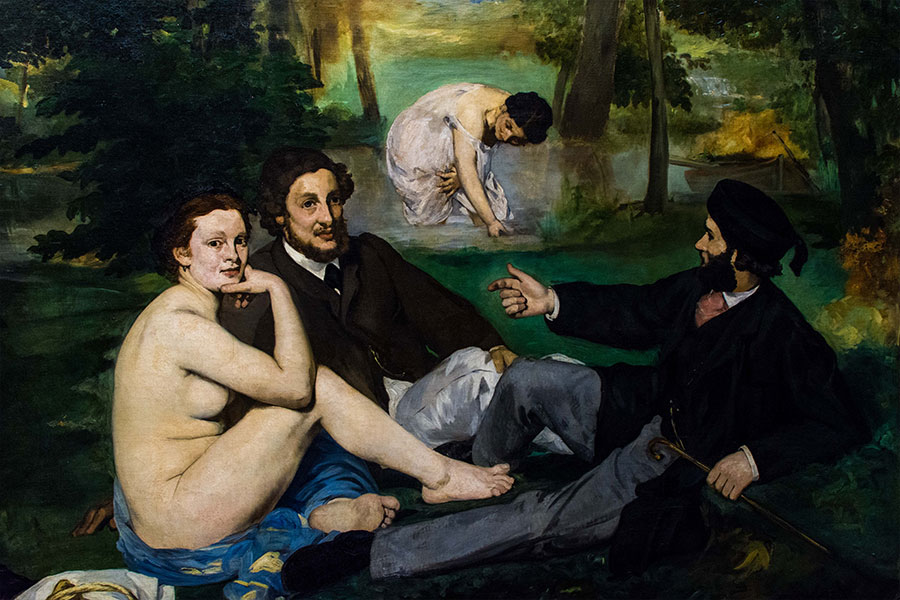
Musée d’Orsay Work: By the table of Henri Fantin-Latour
Back in 1872, the painter Henri Fantin-Latour worked on his series of group portraits (Homage to Delacroix and A studio at les Batignolles). Moreover, the artist brought together eight poets around a meal, including the famous couple Paul Verlaine and Arthur Rimbaud. Other personalities such as Victor Hugo had been invited but refused to pose…
Another absentee, the poet Albert Mérat, who, following a mysterious altercation, had also refused to pose next to Rimbaud. He is replaced on the far right of the painting by a bouquet of hydrangeas…
Henri Fantin-Latour will end his series of group portraits with a fourth canvas painted in 1885 entitled Around the Piano, this time depicting musicians.
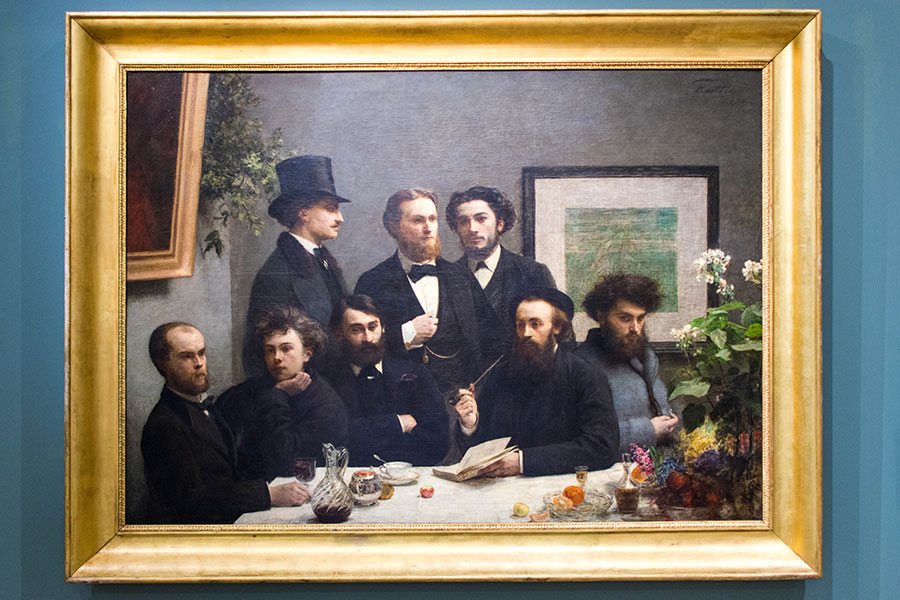
Gustave Courbet – The Etretat cliffs after the storm
Gustave Courbet is well known for his Musée d’Orsay Work The Origin of the World, but he also immortalized the city of Etretat and its cliffs. In the 19th century the Norman town attracted many painters, including Courbet, who settled there in the summer of 1869. From his house by the sea, he can observe the cliff of Aval which he will represent in many paintings. One of the most successful is called The Etretat cliffs after the storm, representing a landscape purified of any human presence.
Here Gustave Courbet balances his composition between the different elements of his scene: earth, sea, sky and stone. The light after the rain is both powerful and soft giving an impression of fullness to this masterful work!
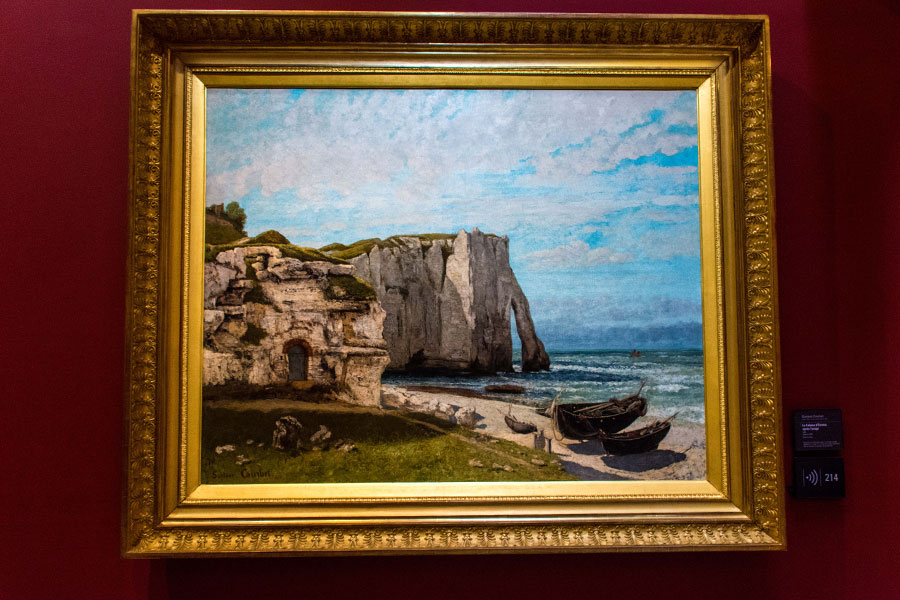
Musée d’Orsay Impressionist works: Monet’s cathedrals
Not far from the Musée d’Orsay clock is a series of paintings by Claude Monet depicting the cathedral of Rouen. The pioneer of Impressionism strives to “capture the moment” in his works. Could Monet be seen as a precursor of photography?
The painter seeks to capture the light and its variations during the day and the different seasons. The Rouen Cathedral series is a fine example of this. At the Musée d’Orsay you will be able to contemplate 5 paintings, the series including 40 variations of the cathedral.
It’s up to you to be careful to detect the main characteristics of Impressionism such as clearly visible brush strokes or the absence of sharp contours to separate the elements. See them through new eyes!
» ALSO READ – Discover our selection of unusual works at the Louvre museum
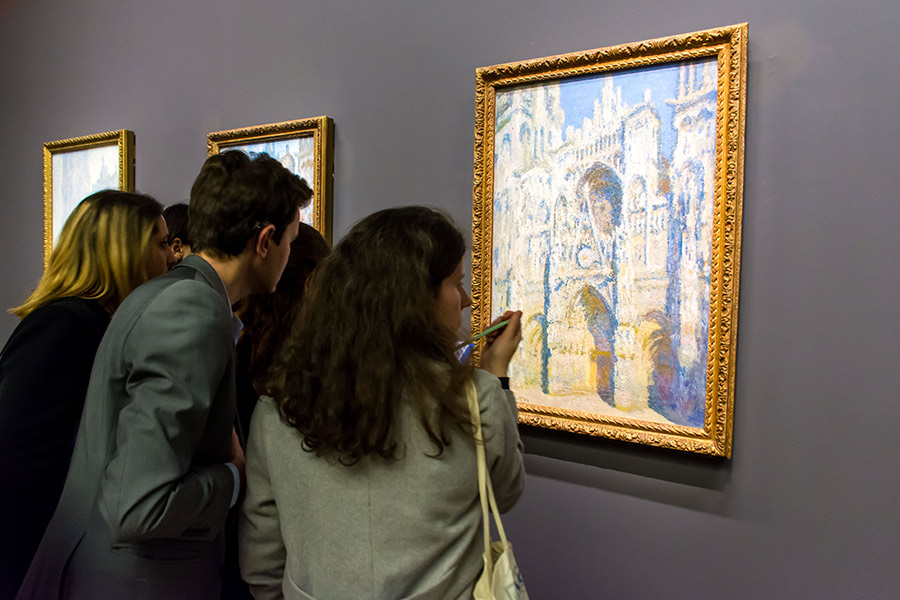
A famous statue exhibited at the Musée d’Orsay: The Liberty of Auguste Bartholdi
As detailed in our article on the Statues of Liberty in Paris, the work presented at the Musée d’Orsay is a bronze reduction of the original statue made by Auguste Bartholdi. It was also a gift from France to the United States to celebrate the centenary of their independence in 1776.
This version exhibited in the museum, dating from 1889, is a copy of the original plaster found in the Musée des Arts et Métiers. The copy was precisely presented at the 1900 Universal Exhibition at the Grand Palais. Subsequently the work was bought by the State and installed according to the wishes of Bartholdi’s widow in the gardens of the Palais du Luxembourg.
The statue will be moved much later in 2012 in Orsay, unfortunately after the theft of its torch, but to the delight of the museum’s visitors!
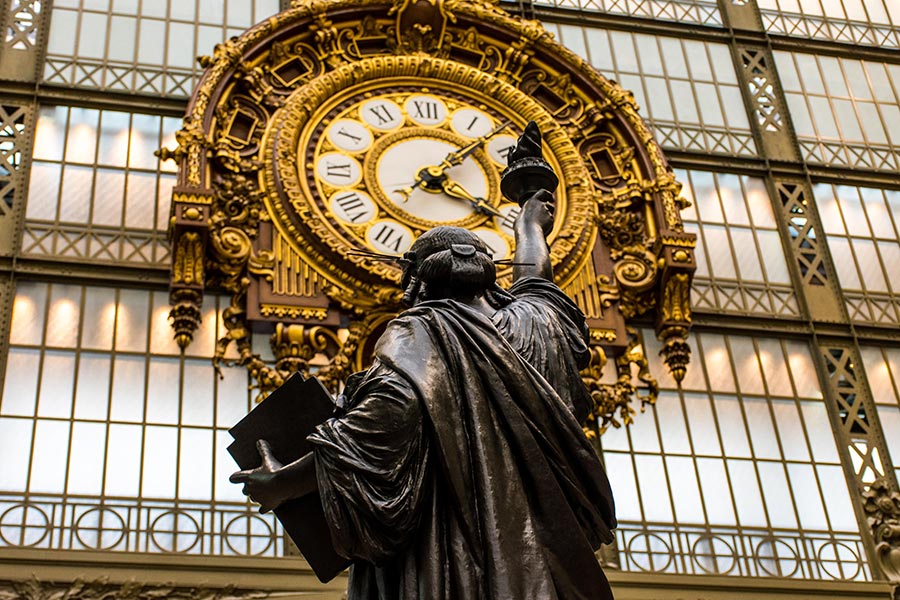
Gustave Caillebotte and his famous Floor Scrapers
The last work of our selection is an oil on canvas of the impressionist movement dating from 1875. The painting The Floor Scrapers by Gustave Caillebotte is one of the first works depicting workers in the city. Indeed the countryside workers have often been depicted but those of the cities much more rarely, which gives the canvas an original character
Caillebotte adopts a very “photographic” composition: receding lines, backward perspective, backlighting, which will be one of the reasons for the painting’s success at that time!
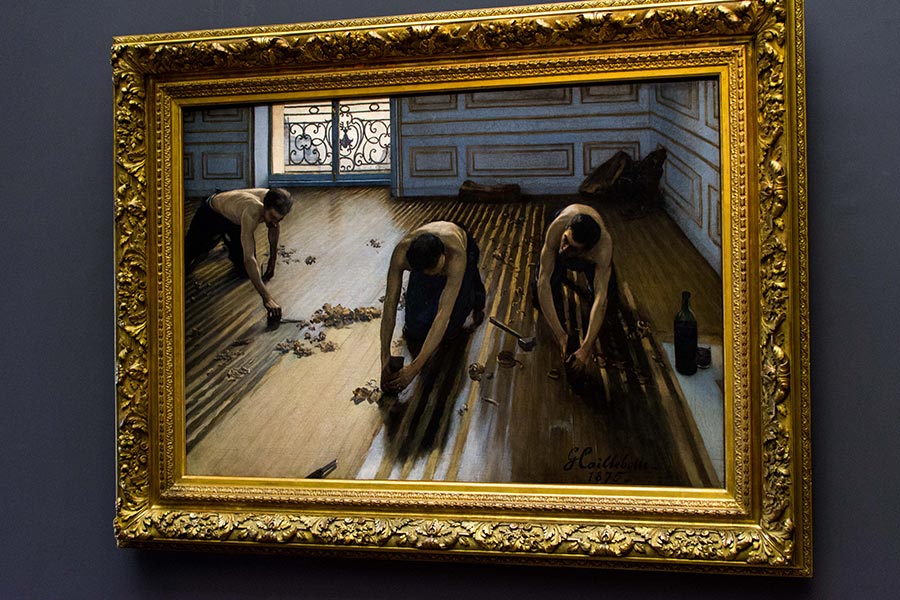
To find more unusual works while exploring the museum in a playful way, feel free to take part in our adult treasure hunt at the Musée d’Orsay. Perfect for learning more while having a great time!
Photo credit: Booster2Success
Booster2Success is an event communication agency organizing adult treasure hunts in several districts of Paris.
CONTACT US to organize an event in Paris.
